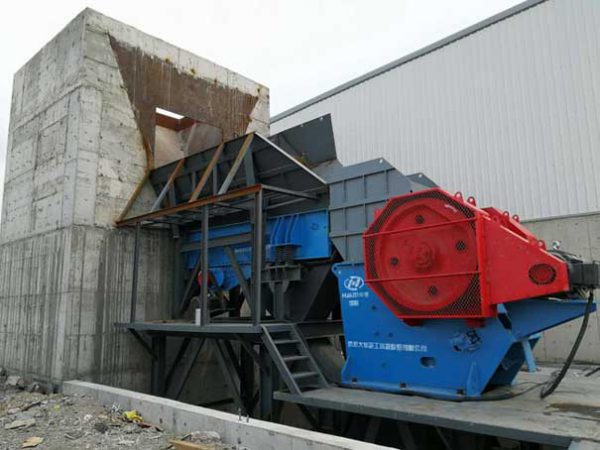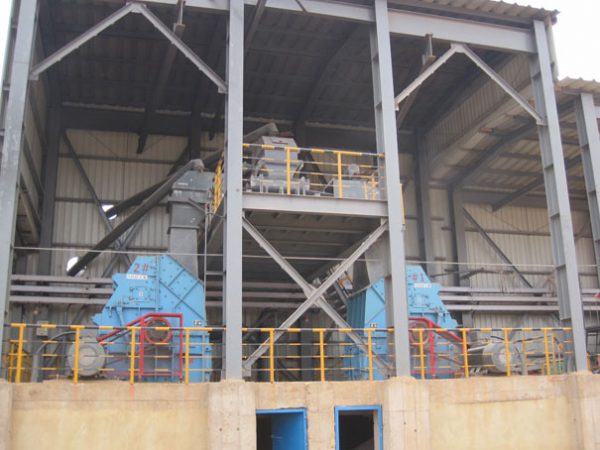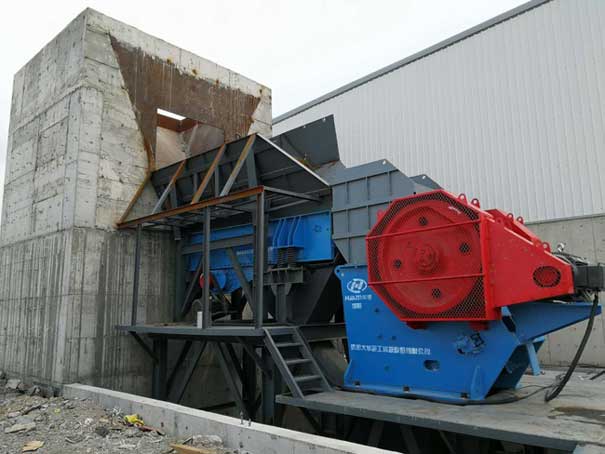Jaw crushers are widely used in the coarse crushing of various minerals and rocks in various industries such as mines, building materials, highways, railways, water conservancy, chemical industries, etc., and coarse crushing of various ores and bulk materials.
Hammer crushers are mainly used for stone crushing in the building materials industry, highway and railway construction, and other industries using stone materials. This product is suitable for crushing various materials of medium hard and below, such as limestone, gypsum, bricks, slag, coal gangue, salt and other materials. It can directly crush materials with a large particle size of 750-1500mm to about 20mm.

So, when to use a jaw breaker and when to use a hammer break, you must first understand the differences in these aspects!
- Different appearance and working principle
It can be distinguished from the appearance, and the working principle is also very different. The working mode of the jaw crusher is squeezing and crushing. The crushing cavity is composed of two jaw plates, a movable jaw and a static jaw, which simulates the movement of the two jaws of an animal to complete the material. Broken, so it is also called “tiger’s mouth”;
The hammer crusher is mainly crushed by impact. After the equipment is started, the motor first drives the rotor to rotate at a high speed. The material enters the cavity of the hammer crusher. The backing of the liner shattered. - Different broken materials
The jaw crusher can crush all kinds of soft and hard materials, such as: granite, quartz stone, diabase, river pebbles, iron ore, etc.
Hammer crushers are mainly used to crush ore with low hardness, and the compressive strength is generally less than 200Mpa, such as limestone, bluestone, coal gangue, etc. The hammer head wears severely when crushing hard materials. It may cost thousands of dollars to replace a set of hammer heads. For ordinary high-manganese steel hammer heads, some need to be replaced in 2 or 3 days, which is too costly. - Different discharge adjustment methods
The adjustment of the discharge particle size of the hammer crusher is achieved by replacing the bottom sieve plate.
There are many adjustment methods for the jaw crusher. The European version of the jaw crusher has three adjustment methods: pad adjustment, wedge adjustment, and hydraulic cylinder. - Different production line configuration
Generally speaking, the content of needle pieces in the output of the jaw crusher is relatively high, and it needs to be shaped with a counterattack, so we often see the configuration of jaw crusher + impact crusher.
Hammer crusher is mainly used for industrial grade one crusher. It is formed at one time and does not require secondary crushing and shaping process. Therefore, a single hammer crusher is commonly used in small and medium-sized production lines. - The application of sand and gravel aggregate line is different
Hammer crushers are rarely used in sand and gravel aggregate production lines. Although the process is simple, the yield is low, easy to be crushed, and there are many powdered materials. The finished aggregate may have microcracks, and the compressive strength is low, which affects the aggregate quality also affects sales and prices, so it is often used as auxiliary sand making equipment.

Jaw crusher is often used as the primary crushing equipment of aggregate production line, followed by impact crusher or cone crusher for intermediate crushing, and then sand making machine for fine crushing and reshaping.
Both hammer crusher and jaw crusher are common rough crushing equipment, with large crushing ratio and simple structure, but the hammer crusher works by impact energy, and the finished product has better grain shape. The limitation is that it is not suitable for hard rock material processing, while the jaw crusher it can handle a wide range of hardness materials with a wider processing range, but the limitation is that the shape of the finished product is not good, and it needs to be reshaped by counterattack or impact cracking. In general, both have their own advantages. Which equipment to choose, still need to be based on specific process requirements.

